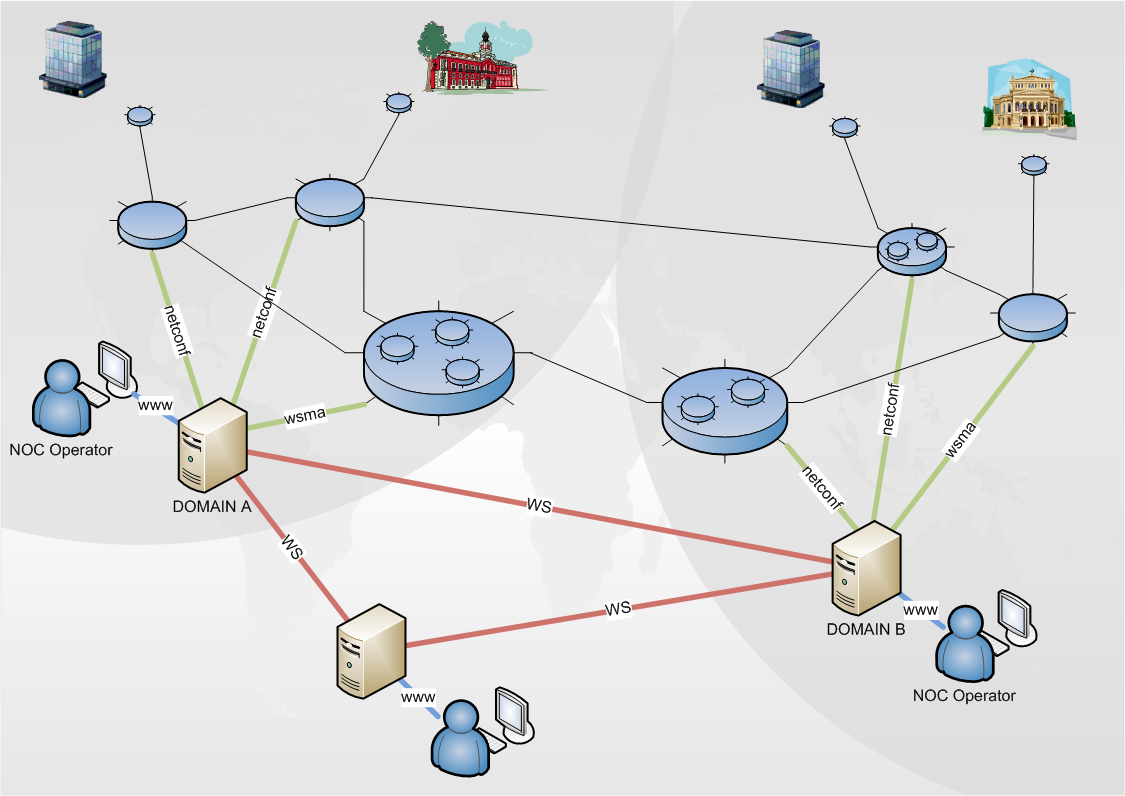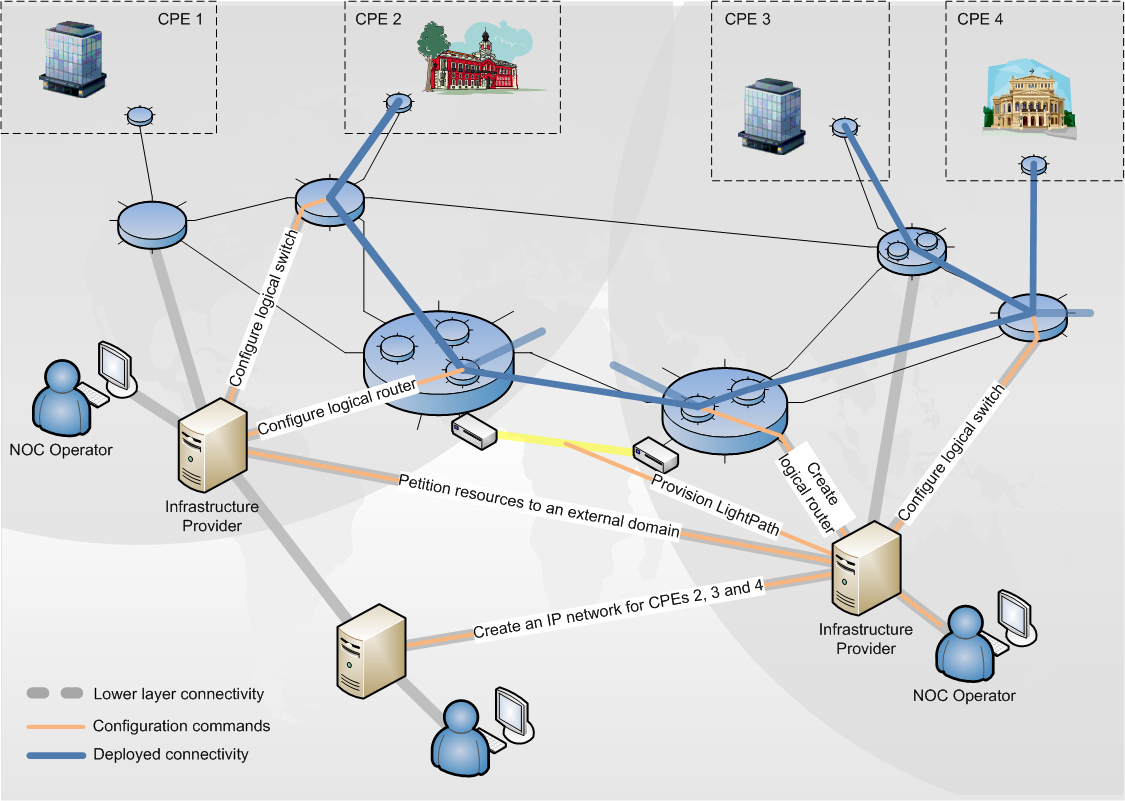Overall architecture and components
Mantychore is implemented with the OSGi specification and works with Fuse Service Mix 4.3. Fuse works as a Service platform which implements the OSGi specification. It provides a set of libraries and tools to allow easier development of Fuse components.
The figure show a typical architecture
The picture shows how a Mantychore user connect to the Server and how Mantychore connects with its devices.
The Mantychore software is multiplatform. To set up a Mantychore architecture, you need:
- A Computer which it is going to act as a Server. It will have Fuse Service Mix installed along with the the Mantychore components.
- Configure SSH to enable access to the routers (see compatible devices).
There are two types of Mantychore client:
- GUI Client. A desktop program has implemented with RCP.
- Web site. With Ajax and RAP, it is implemented a site which simulates the GUI client
When a new router is added in the Mantychore Server, it is added as a resource which its properties and capabilities (this follows the IaaS paradigm). In this picture you can see how a Mantychore resource manages its resources:
For the last version of Mantychore, the modules and components which form Mantychore are:
- Resource. This is a representation of a router. It representes a a set of capabilities or features that are available.
- Capabilities. This is a router feature. It includes a set of actions related with this feature. For instance, IP operations (interface configuration, static route configuration) are represented in the IP Capability.
- ActionSet. This component is a set of operations which a router understands and carry out. With these operations, using named commands, an action can provide a complete configuration for a topic. For example, the action of configureing an IPv4 address in an interface.
- CommandSet. this is a representation of a command which a model router can understand. It implementes an operation that can be sent through the transport layer (using SSH for example).
- QueueManager, this is a queue implementation for the above actions.
- Protocol. This module is the implementation of a protocol which it is used to connect with a device. The ProtocolSessionManager calls these components to manage protocols.
- ProtocolSessionManager. This manages the available Protocol components used by actions. It includes a set of protocols which will be available to each resource allowing it to connect to a device.
Check meaning is preserved here
- EventManager. This is responsible for receiving and publishing events and notifications.
- Commons. Common classes which other components will be able to use.
Protocols Used
Protocols
Here are listed the main protocols used to configure and manage the network via the Mantychore tool.
- HTTP (HyperText Transfer Protocol) - http://www.w3.org/Protocols/
- WS (Web Service) - http://www.w3schools.com/webservices/ws_intro.asp
- NETCONF - http://en.wikipedia.org/wiki/NETCONFhttp://www.ops.ietf.org/netconf/
- WSMA (Web Services Management Agent) - http://www.cisco.com/en/US/docs/ios/netmgmt/configuration/guide/nm_cfg_wsma_ps6441_TSD_Products_Configuration_Guide_Chapter.html
In the image, we can see the different protocols involved in a Mantychore architecture. The green lines represent the communications to the devices.The red lines represent communication among servers, GUI and Mantychore software.
Workflow
This image presents a possible infrastructure configured using Mantychore. It shows where Mantychore works (brown lines) to connect two public entities. In this case, Mantychore does not have complete control and it works above an external infrastructure.

